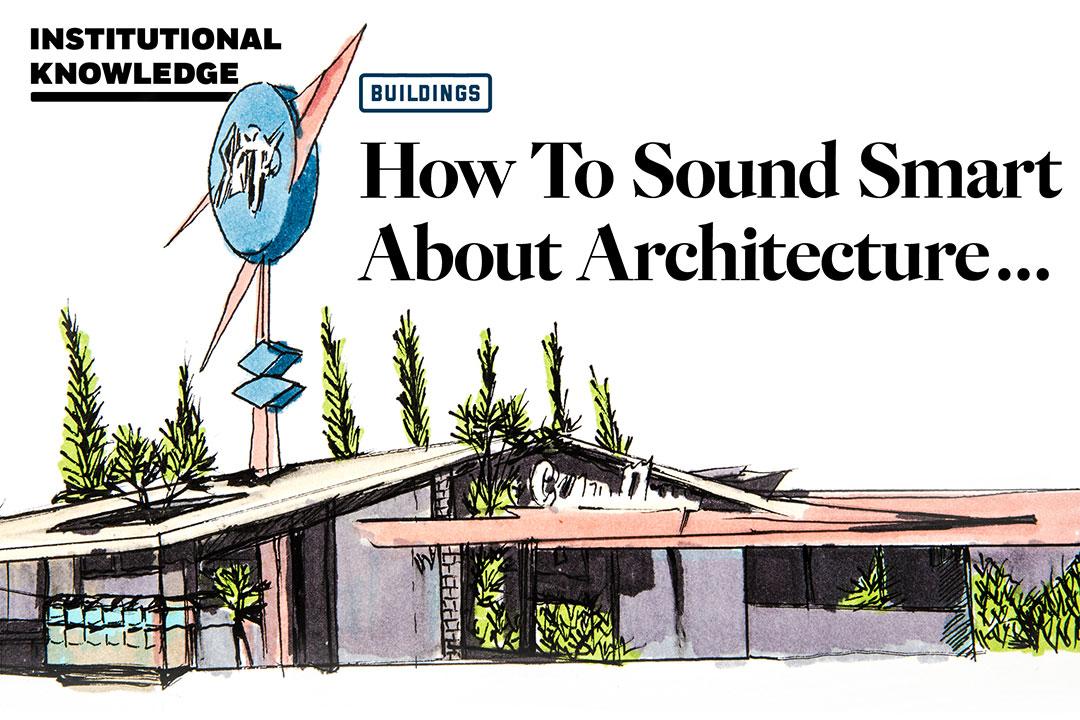How To Sound Smart About Architecture ... - Winter 2016
(Illustrations: Francelyn Fernandez)
And impress friends, significant others, your parents who
didn't want you to get that liberal arts degree.
By Matthew Stoss
Ever wanted to sound smart about architecture but without learning all that math and buying drafting tools? Us, too. So we asked Sarah Groesbeck,MA '10, to help us cheat a little. She is a D.C.-based architectural historian at Louis Berger, a global architecture, engineering and construction firm, where she specializes in historic preservation. She also evaluates buildings for the National Register of Historic Places.
Ms. Groesbeck took time out from all that to give us a crash course in common architectural styles. Here is a handy, illustrated guide so, like George Costanza, you, too, can pretend you're an architect.
Googie
Ships Coffee, Culver City, Calif.
Defined by: kitsch; neon; geometric shapes; Atomic/Space Age influence and imagery; common for motels, diners, gas stations, bowling alleys.
Context: Flamboyant and fun, it's meant to get your attention and is tied to the culture of Route 66. It's also a favorite of Ms. Groesbeck.
Queen Anne
You think it’s Victorian ... but it's not
Defined by: asymmetry; complicated rooflines; towers; porches; ginger breading.
Context: "Victorian" is an era, not an architectural style, but if someone describes a house as "Victorian," they probably mean Queen Anne.
Craftsman
Every bungalow you've ever seen
Defined by: low-pitched roofs; porch; horizontal lines solid columns (often stone) in front.
Context: A uniquely American style, its name comes from the Arts and Crafts movement in the late 19th century, which rejected anything that looked mass-produced.
Colonial Revival
Woodrow Wilson House, Washington, D.C.
Defined by: symmetry; plain facades; centered, decorative doorways; often brick.
Context: It's everywhere, typically residential, and came into vogue around 1876 as a result of the centennial. Ms. Groesbeck jokes that "it's the style that won't quit."
Second Empire
Eisenhower Executive Office Building, Washington, D.C.
Defined by: mansard roof; dormer windows; molded cornice below the roofline.
Context: It's named for the Second French Empire, which lasted from 1852 to 1870. The Second Empire style stayed popular for another 10 years or so.
More Alumni News
The Sweet Life
Behind the newly named Honey W. Nashman Center for Civic Engagement and Public Service is an American story more than a century in the making.
Fluid Dynamics
As a child in the 1950s, alumna Alexandra "Alex" Tolstoy created oil sketches of Rembrandts and of angels in Michelangelo paintings.
Legally Bound
Inside the Jacob Burns Law Library's trove of 35,000 rare books.










